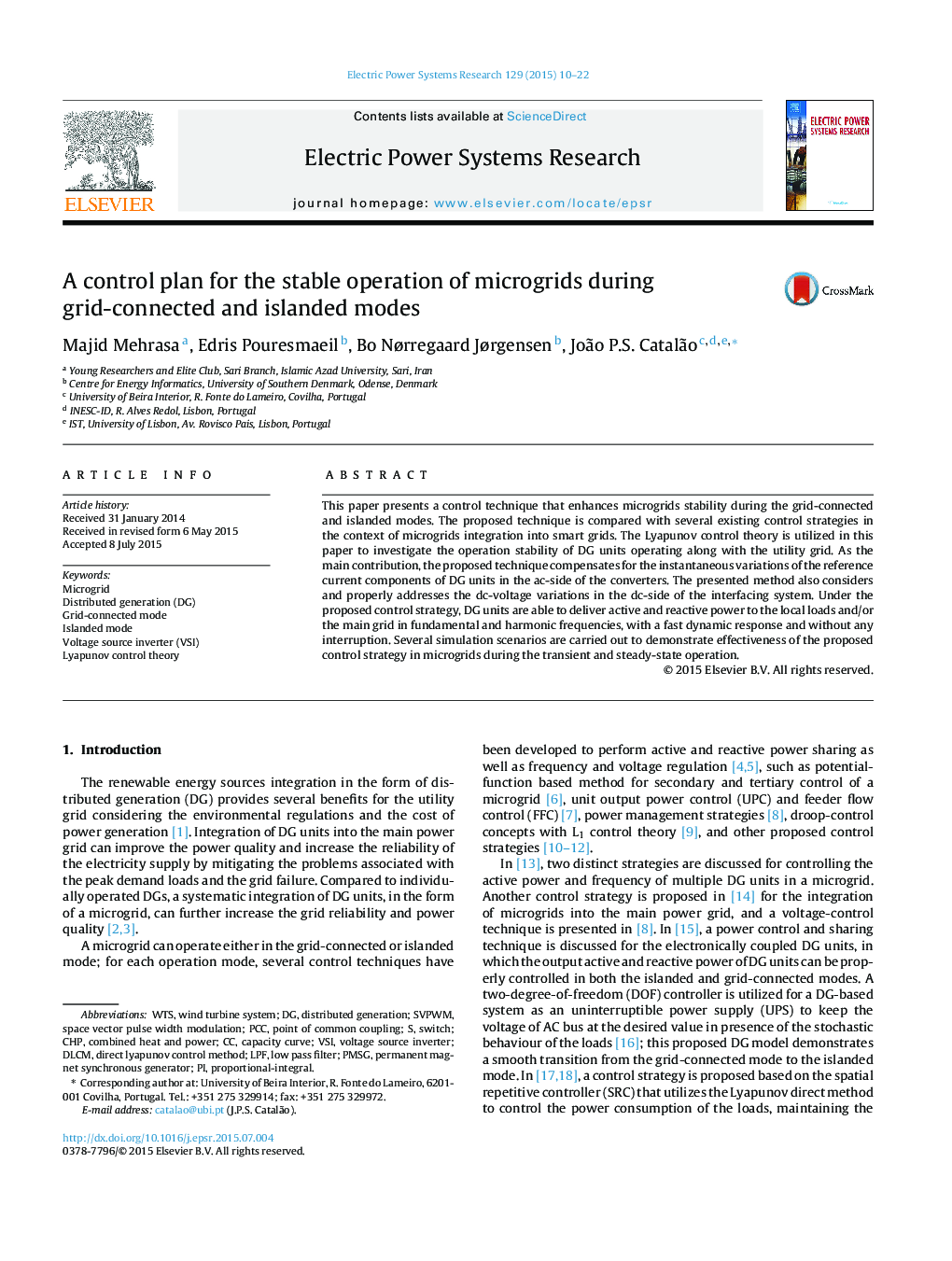| Article ID | Journal | Published Year | Pages | File Type |
|---|---|---|---|---|
| 7112522 | Electric Power Systems Research | 2015 | 13 Pages |
Abstract
This paper presents a control technique that enhances microgrids stability during the grid-connected and islanded modes. The proposed technique is compared with several existing control strategies in the context of microgrids integration into smart grids. The Lyapunov control theory is utilized in this paper to investigate the operation stability of DG units operating along with the utility grid. As the main contribution, the proposed technique compensates for the instantaneous variations of the reference current components of DG units in the ac-side of the converters. The presented method also considers and properly addresses the dc-voltage variations in the dc-side of the interfacing system. Under the proposed control strategy, DG units are able to deliver active and reactive power to the local loads and/or the main grid in fundamental and harmonic frequencies, with a fast dynamic response and without any interruption. Several simulation scenarios are carried out to demonstrate effectiveness of the proposed control strategy in microgrids during the transient and steady-state operation.
Keywords
CHPPCCLPFWtsVSIPMSGVoltage source inverter (VSI)SVPWMVoltage source inverterCombined Heat and PowerSwitchDistributed generationIslanded modeGrid-connected modeMicrogridWind turbine systemLow pass filterproportional-integralSpace vector pulse width modulationCapacity curveDistributed generation (DG)Point of common couplingPermanent magnet synchronous generator
Related Topics
Physical Sciences and Engineering
Energy
Energy Engineering and Power Technology
Authors
Majid Mehrasa, Edris Pouresmaeil, Bo Nørregaard Jørgensen, João P.S. Catalão,
